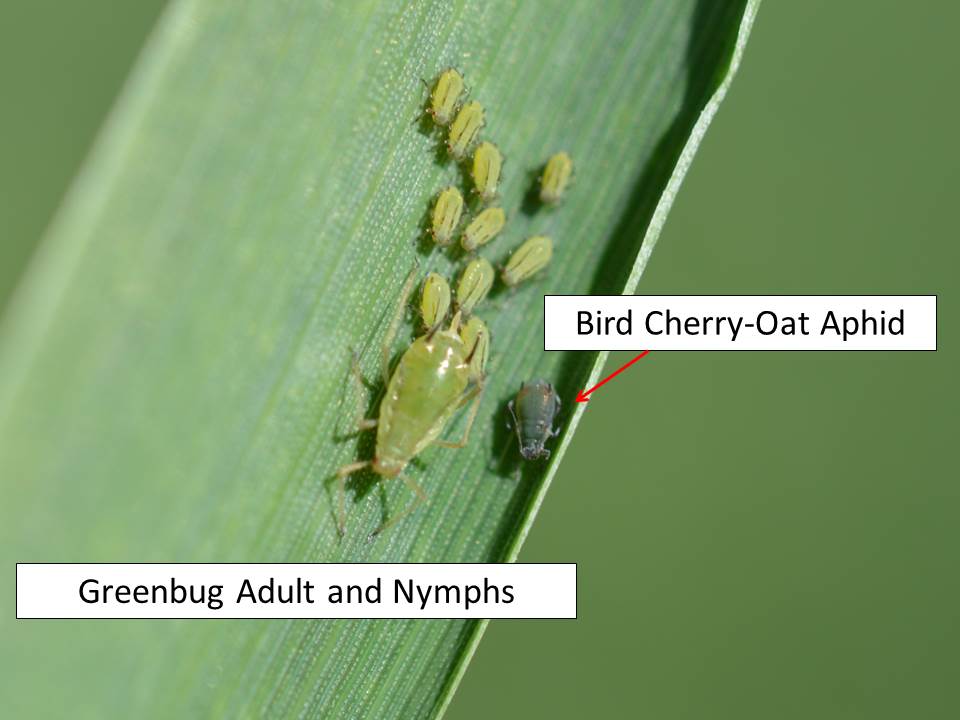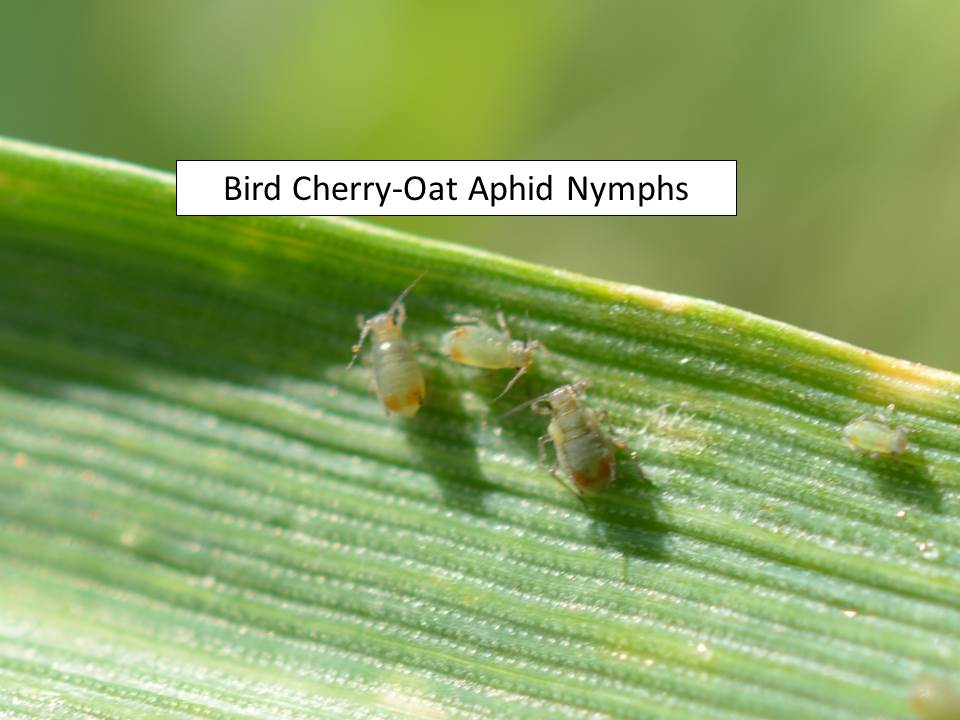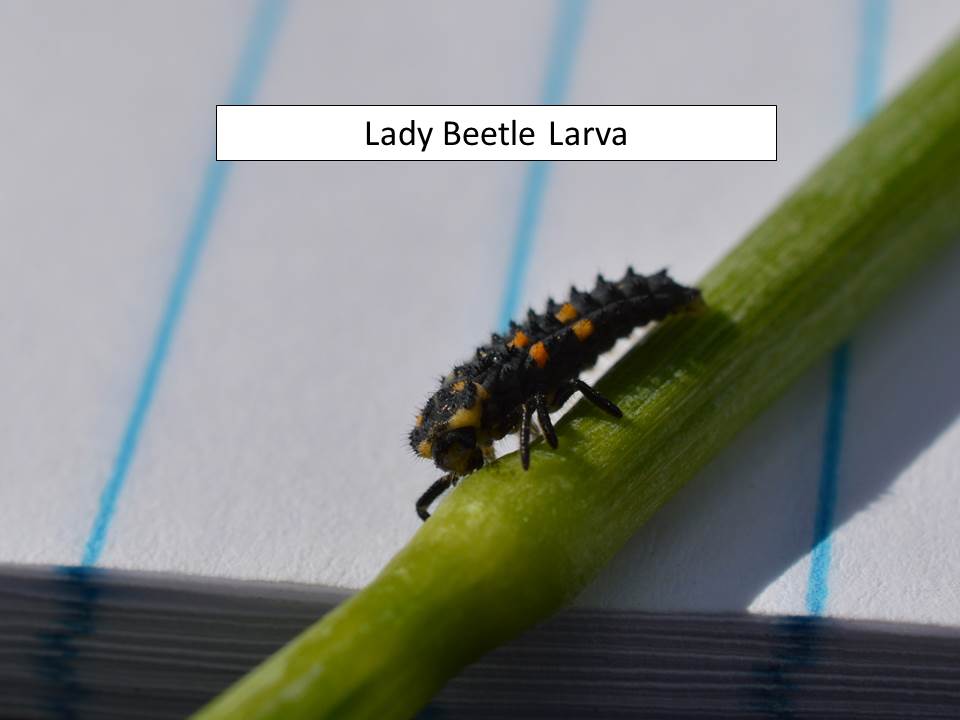–by Dr. Jeff Whitworth and Dr. Holly Schwarting
Wheat aphids, primarily bird cherry-oat and greenbugs, continue to migrate into Kansas on southern winds.
The most common question this last week then is whether to add insecticide to a fungicide application to kill the aphids. First of all, we do not recommend pesticide applications unless justified, and the mere presence of aphids in wheat does not justify an insecticide application. Aphids need to be at densities of 20+ aphids/tiller when wheat is in the boot to heading stages before aphids begin to impact wheat simply due to their feeding. Even then, their feeding is more impactful on plants that are already stressed by less than ideal growing conditions and when there are few beneficials present, i.e. lady beetles, lacewings, parasitic wasps, etc. Recent rains seem to have really helped alleviate the previous dry conditions- so growing conditions are not stressing the wheat. When an insecticide is added to a justified fungicide application, the insecticide will kill the aphids, as well as all the beneficials. The aphids will continue to migrate into the state but the beneficials will be gone and much slower to re-populate. Foliar insecticide applications made to control aphids with the aim of reducing the transmission of Barley yellow dwarf viruses has not been proven and thus is not recommended. At the present time there seem to be good populations of lady beetles and parasitic wasps in wheat fields to help mitigate aphid populations.



